Learning effects on muscle modes and multi-mode postural synergies
- PMID: 17724582
- PMCID: PMC2556403
- DOI: 10.1007/s00221-007-1101-2
Learning effects on muscle modes and multi-mode postural synergies
Abstract
We used the framework of the uncontrolled manifold hypothesis to explore the effects of practice on the composition of muscle groups (M-modes) and multi-M-mode synergies stabilizing the location of the center of pressure (COP). In particular, we tested a hypothesis that practice could lead to a transition from co-contraction muscle activation patterns to reciprocal patterns. We also tested a hypothesis that new sets of M-modes would form stronger synergies stabilizing COP location. Subjects practiced load release tasks for five days while standing on a board with a narrow support surface (unstable board). Their M-modes and indices of multi-M-mode synergies were computed during standing without instability and during standing on an unstable board before practice, in the middle of practice, and at the end of practice. During standing without instability, subjects showed two consistent M-modes uniting dorsal and ventral muscles of the body respectively (reciprocal modes). While standing on an unstable board, prior to practice, subjects commonly showed M-modes uniting muscle pairs with opposing actions at major leg joints-co-contraction modes. Such sets of M-modes failed to stabilize the COP location in the anterior-posterior direction. Practice led to better task performance reflected in fewer incidences of lost balance. This was accompanied by a drop in the occurrence of co-contraction M-modes and the emergence of multi-mode synergies stabilizing the COP location. We conclude that the central nervous system uses flexible sets of elemental variables (modes) to ensure stable trajectories of important performance variables (such as COP location). Practice can lead to adjustments in both the composition of M-modes and M-mode co-variation patterns resulting in stronger synergies stabilizing COP location.
Figures
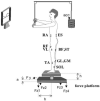
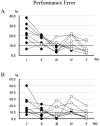
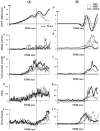

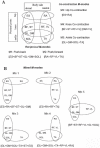


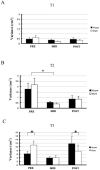


References
-
- Aruin AS, Latash ML. Anticipatory postural adjustments during self-initiated perturbations of different magnitude triggered by a standard motor action. Electroencephalogr Clin Neurophysiol. 1996;101:497–503. - PubMed
-
- Belen’kii VY, Gurfinkel VS, Paltsev YI. Elements of control of voluntary movements. Biofizika. 1967;12:135–141. - PubMed
-
- Bernstein NA. The coordination and regulation of movements. Pergamon Press; London: 1967.
-
- Bernstein NA. On dexterity and its development. In: Latash ML, Turvey MT, editors. Dexterity and Its Development. Erlbaum Publ.; Mahwah, NJ: 1996. pp. 3–246.
Publication types
MeSH terms
Grants and funding
LinkOut - more resources
Full Text Sources

